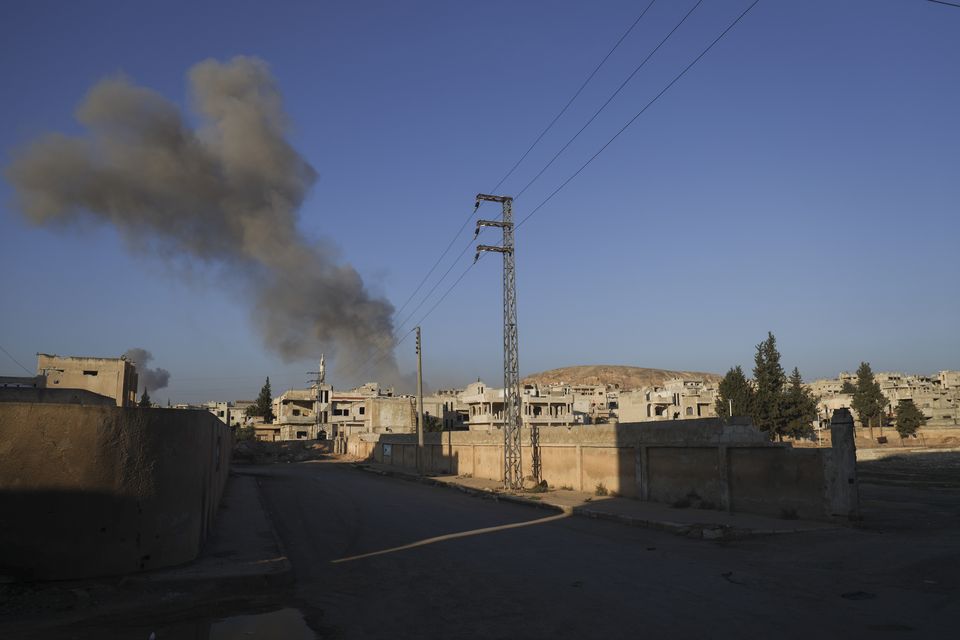Syrian officials say a counter-offensive has pushed back insurgents attempting to advance to the strategic central city of Hama, while the insurgency says it has captured more Syrian troops and Iranian-backed militants during fierce battles.
The latest flare-up in Syria’s long civil war comes after forces opposed to Syrian President Bashar Assad captured large parts of the northern city of Aleppo, the country’s largest, as well as towns and villages in southern parts of the north-western Idlib province in recent days.
The war between Mr Assad and his foreign backers and the array of armed opposition forces seeking his overthrow has killed an estimated half a million people over the past 13 years.
Syrian state media Sana said insurgents retreated some 12 miles from government-held Hama, Syria’s fourth-largest city, as government troops backed by Russian airpower entrenched themselves in the outskirts.
We need your consent to load this Social Media content. We use a number of different Social Media outlets to manage extra content that can set cookies on your device and collect data about your activity.
Fierce fighting has raged for days as Damascus fears that the insurgents will make their way into the city like they did over the weekend into Aleppo.
The insurgency, through its Military Operations Department channel on the Telegram app, said it has captured five Iran-backed militants, of whom two were from Afghanistan, as well as three Syrian troops from its 25th Special Mission Forces Division in eastern Hama. The claims could not be independently confirmed.
If the insurgents seize Hama city and control the province, it could leave the coastal cities of Tartous and Lattakia isolated from the rest of the country.
Lattakia is a key political stronghold for Mr Assad and Syria’s Alawite community as well as a strategic Russian naval base.
Geir Pedersen, the UN special envoy for Syria, said tens of thousands of people have been displaced by the fighting, which started last week.
“If we do not see de-escalation and a rapid move to a serious political process, involving the Syrian parties and the key international players, then I fear we will see a deepening of the crisis,” Mr Pedersen said in an address the UN Security Council.
International efforts are focused on de-escalation (AP)
“Syria will be in grave danger of further division, deterioration, and destruction.”
The insurgency is led by Hayat Tahrir al-Sham, a jihadi group, as well as an umbrella group of Turkish-backed Syrian militias called the Syrian National Army.
For years, both have entrenched themselves in north-west Idlib province and parts of northern Aleppo, as the battered country reeled from years of political and military stalemates.
The groups, alongside Turkey, believe that the insurgency shows that Mr Assad must reconcile with opposition forces and include them in any political solution to end the conflict.
Ankara has been seeking to normalise ties with Syria to address security threats from groups affiliated with Kurdish militants along its southern border and to help ensure the safe return of more than 3 million Syrian refugees.
We need your consent to load this Social Media content. We use a number of different Social Media outlets to manage extra content that can set cookies on your device and collect data about your activity.
Mr Assad has insisted that Turkey’s withdrawal of its military forces from northern Syria should be a condition for any normalisation between the two countries.
Damascus views the insurgents as terrorists, and Mr Assad has vowed to respond to the insurgency with an iron fist.
Turkish and Iranian officials have met earlier this week, in a bid to reach a solution to deescalate the conflict.
Arab countries bordering Syria and once backed groups that tried to overthrow Mr Assad, have expressed their concern of the conflict’s regional impacts, and have backed the President.
